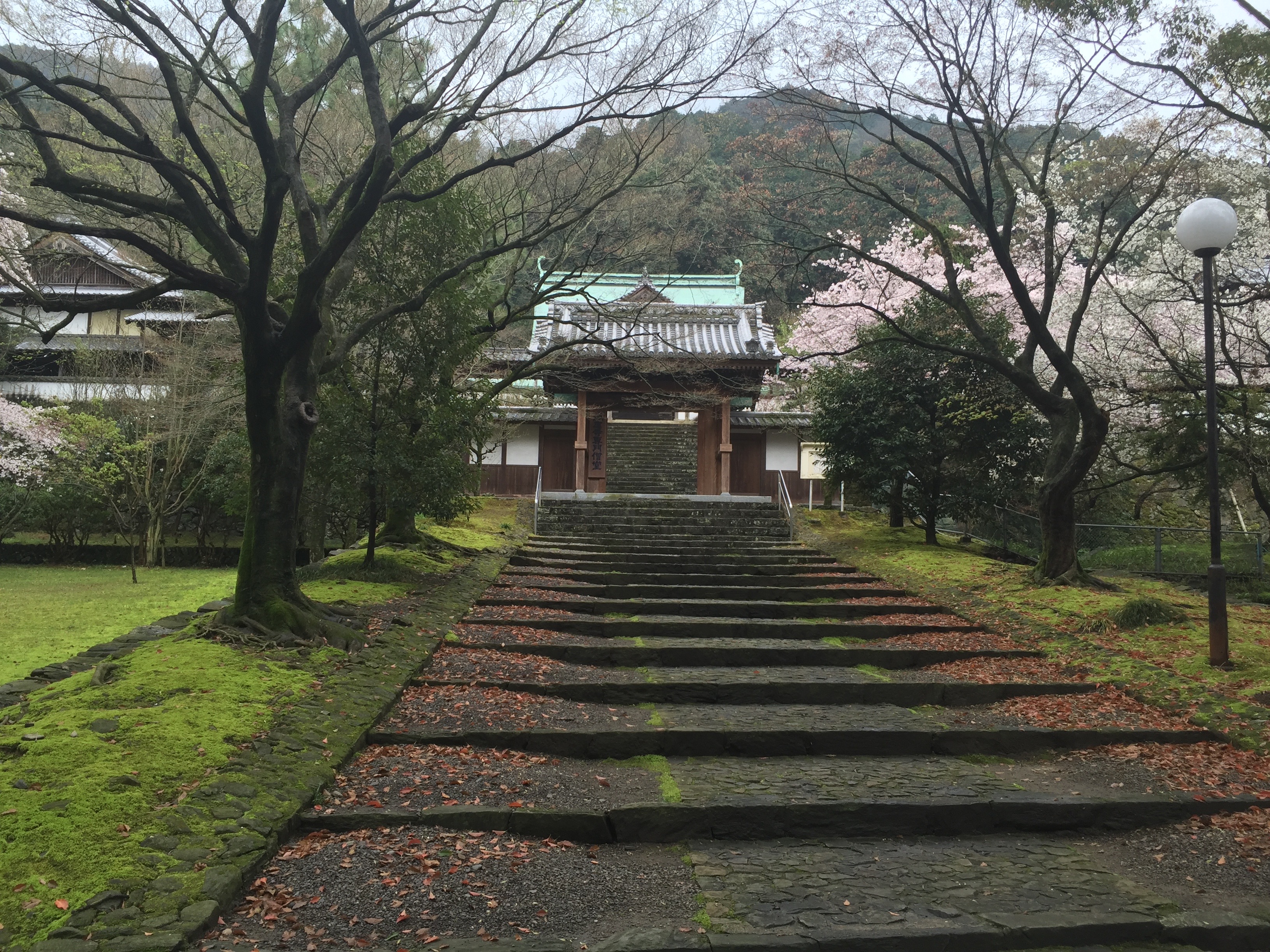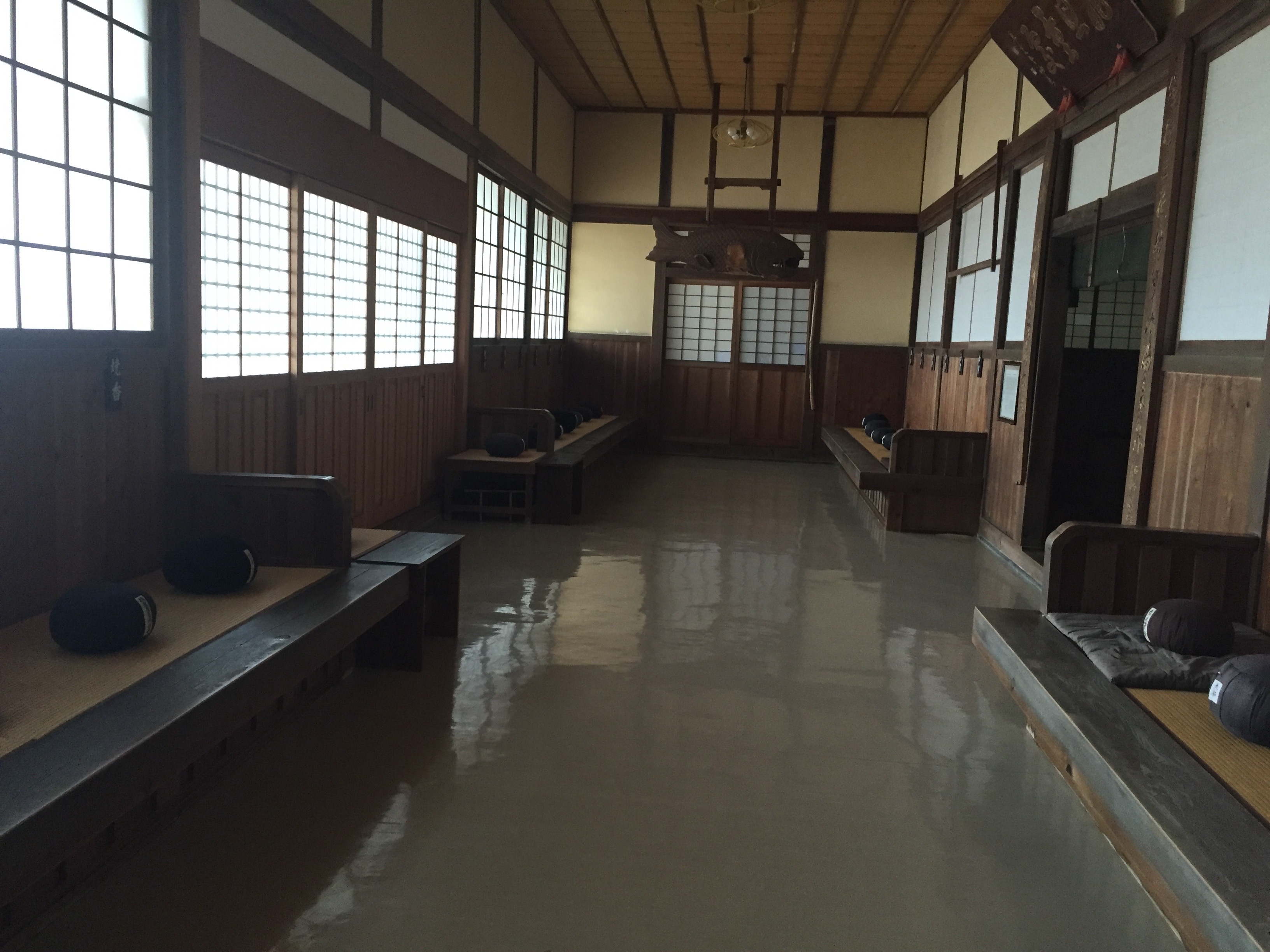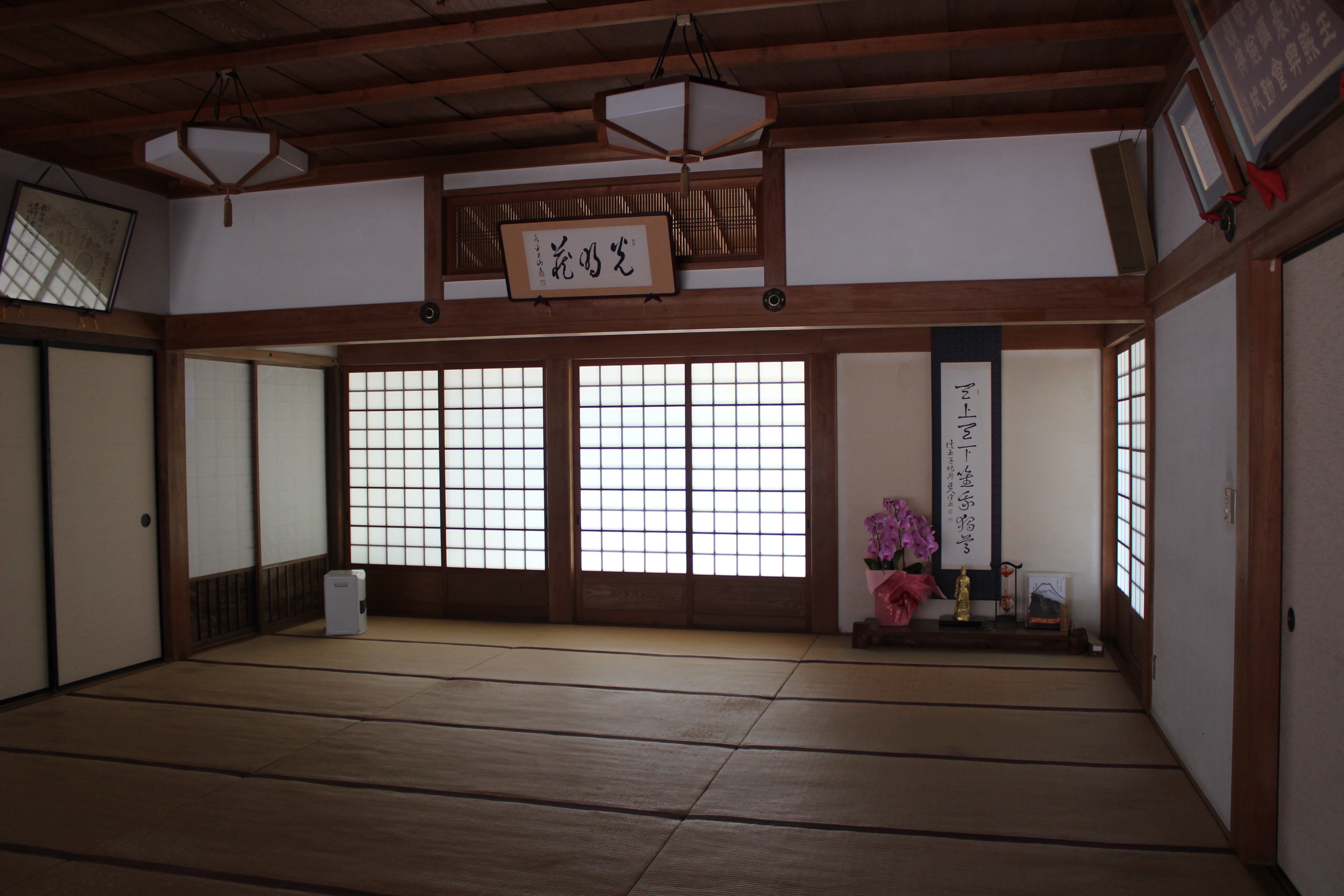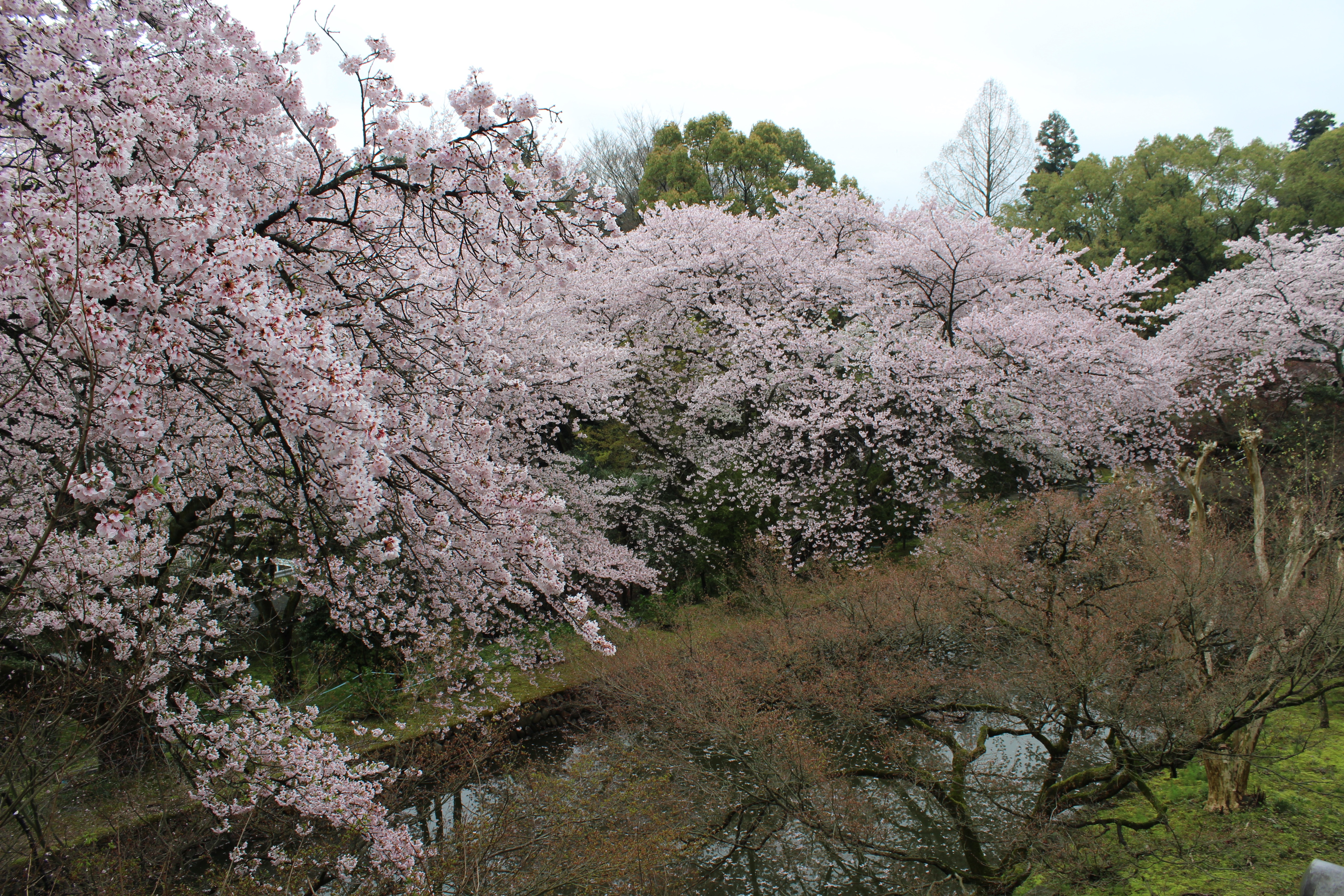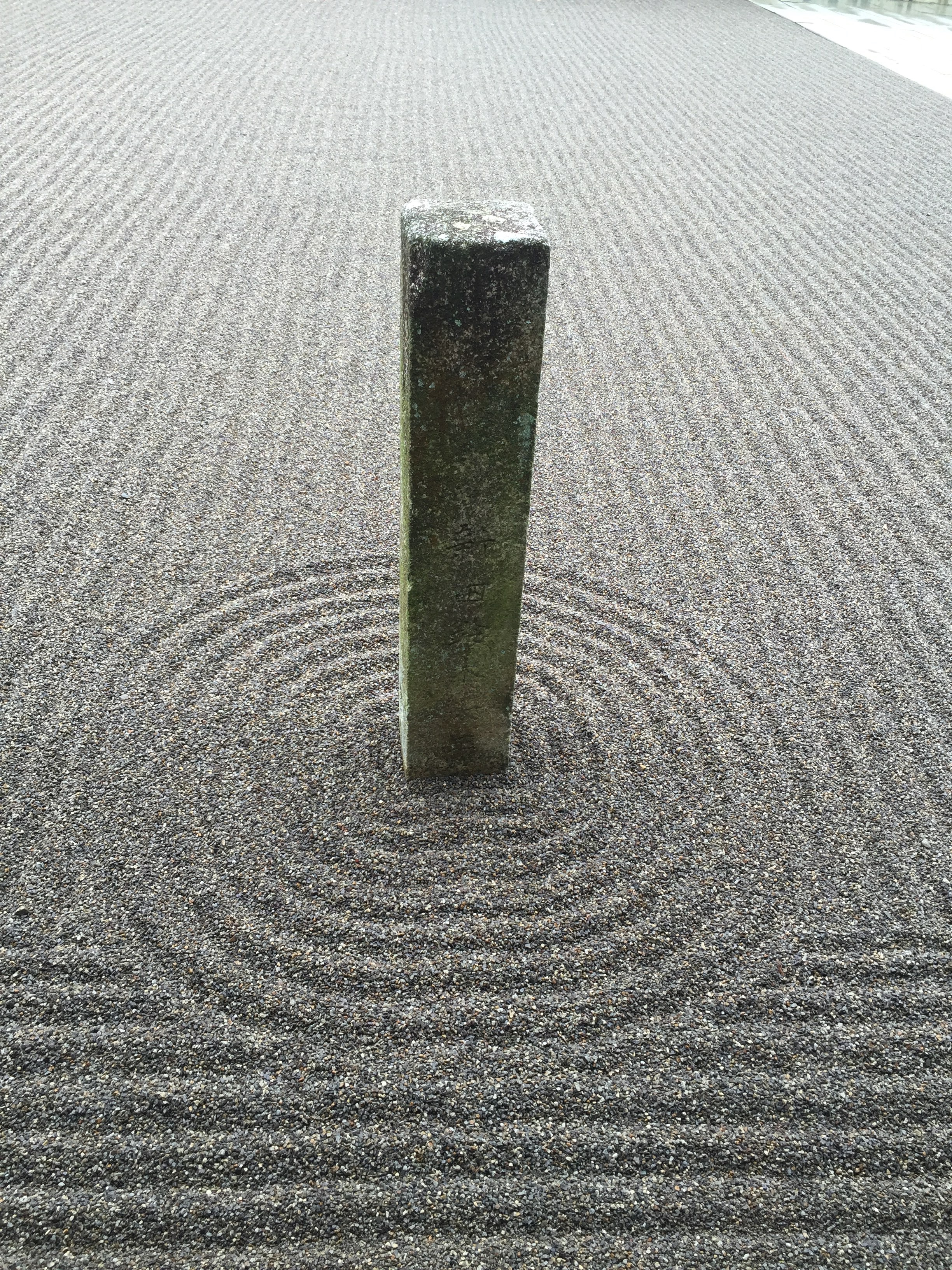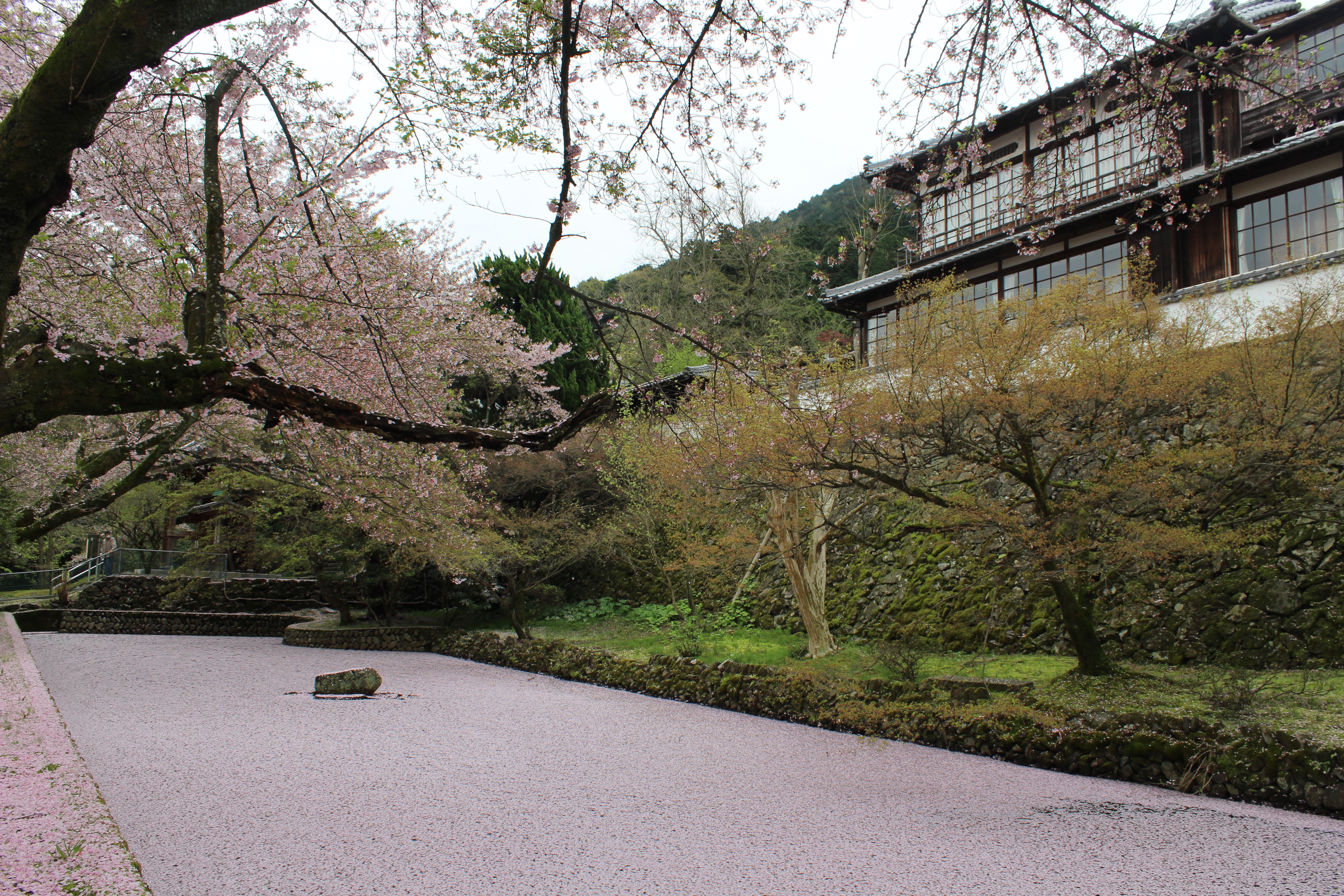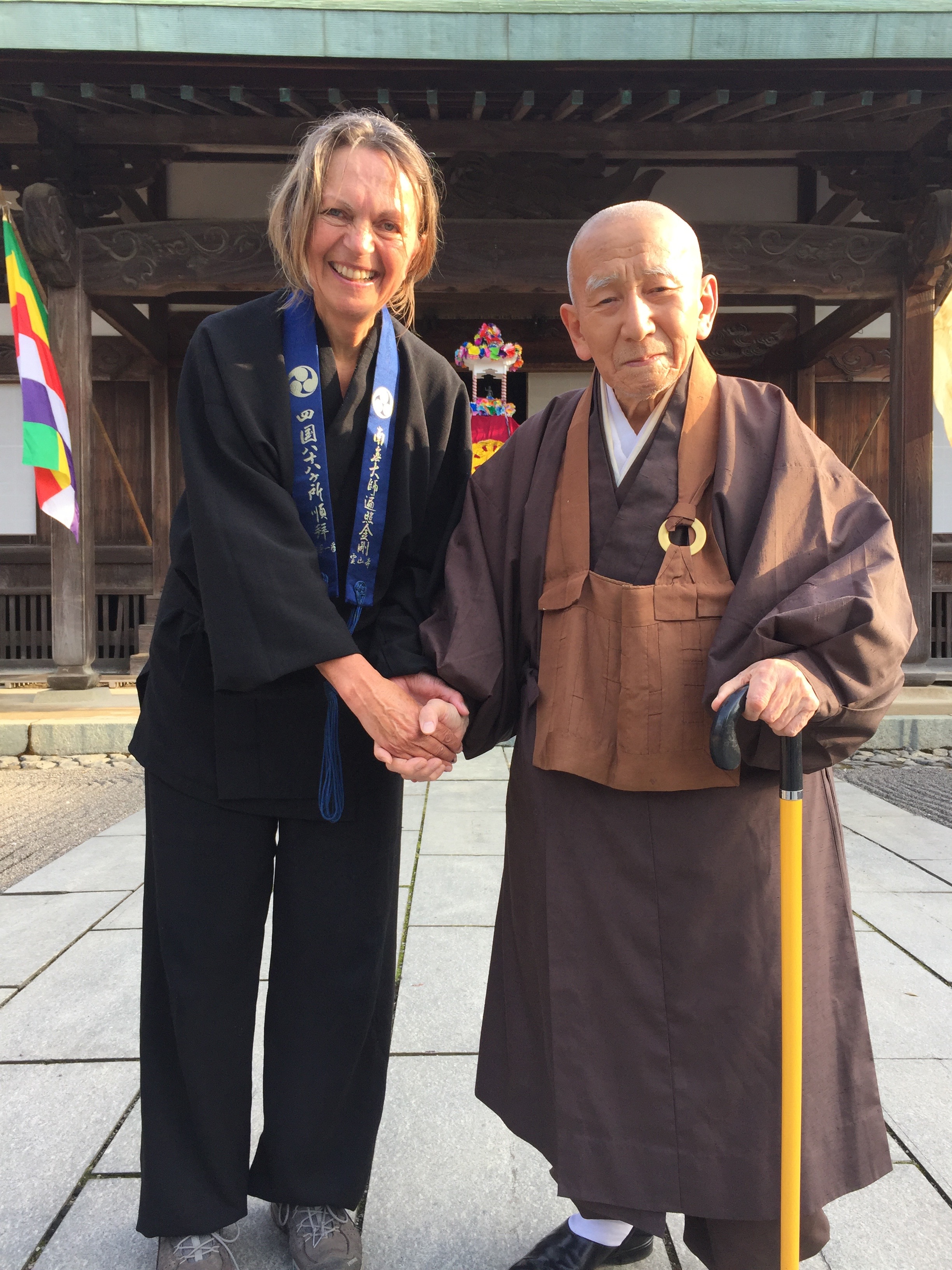Eight Days in the Sōtō Zen temple Zuiōji
The Sōtō Zen temple Zuiōji is located in Niihama and lies directly in walking distance
to the Henro-no-michi (88 temple hike). Rosan Rōshi, my Zen teacher, suggested
that I stay there for some days. Zuiōji was his own training monastery. His teacher,
Katagiri Rōshi, has sent many students there for learning the Zen way. The temple is
located at the foot of a densely forested mountain.
Bodhidharma surrounded by moss covered Cedar trees
in front of the entrance stairway
First entrance gate of Zuiōji, with the green copper roof
of the Hattō (Dharma Hall) in the background
Second entrance gate with the copper roof visible at the top of the stairs
It was misty and rainy when I arrived at the temple in the early morning. The cherry
trees were in full bloom. Daikaisan, the tenzo (cook) of Zuiōji, welcomed me warmly.
His ability to speak German and English was an incredible help for me to follow the
strict rules and time schedule of temple life. Although I often made mistakes, I never
felt like an outsider (although I was, being the only foreigner and the only woman
there). In Zuiōji, I saw and experienced the true meaning of harmony and integration.
Falling blossoms of the white blooming magnolia tree in front of Hattō (Dharma Hall)
In one of the working periods, we collected the fallen and wilted blossoms in big
bags.
In the life of a Zen temple, no oral orders are given. The monks know what to do by
particular sounds of instruments. Only a few people have a clock – like the monk
in the Hattō beating the hokku (Dharma drum) and bell.
Hokku and temple bell mounted in the Hattō
In the Hattō were also other instruments used for ceremony and rituals.
Bhodidharma (Daruma in Japanese), painted by Tsūgen Narasaki Rōshi
The painting is mounted in the Hattō. Bodhidharma (6th century) brought Chan
Buddhism (Zen) to China.
Beside meditation, working (samu) is a major practice in the Zen temple. The day
started at 3:50 a.m. with zazen (meditation) and ended at 9:35 p.m. with the last
meditation period. In between there were periods of working, sutra chanting, tea
ceremony, service, eating and – one important pillar of a Zen temple – bathing.
The daily hot bath was an incredible treat! During the short resting periods, I often
fell asleep.
The outer part of the Sōdō or meditation hall, where I meditated
The monks in residence meditate and also sleep in the inner room. In the meditation
hall, breakfast is served in the traditional form (with ōryōki, a set of bowls, chop-
sticks, spoon, wiping cloth, etc., lit. suitable amount vessels for the person/occasion).
As a newcomer, I was supposed to finish eating first – but most of the time I was last.
Eating with chopsticks and following all the rituals of how to eat was a challenge.
The gyoban (fish-shaped drum, lit. fish plate, hallow inside also called hō) was
hanging from the ceiling at the end of the meditation hall where I was sitting.
It is used as a signal to start and end rituals, mainly to indicate the start of a meal.
A fish never sleeps and symbolizes wakefulness and devotion to the practice.
Another instrument to indicate meals is the Umpan, or cloud shaped gong. It is
placed near the kitchen and beside the altar of the kitchen God.
Umpan in front of the altar of the kitchen God
Once a day in the morning, a tea ceremony, together with the greeting of the abbot
Tsūgen Narasaki Rōshi, was celebrated. When I asked one time why there is no
Dharma talk, Daikai-san answered “ Tsūgen Rōshi is the living Dharma himself”.
I really saw that.
Kannon with Comfort mudra (hand sign)
During the working periods, we often did sweeping and weeding in the garden.
I took this photo at the dragon lake, a lake surrounded by blooming cherry trees.
I loved working with the young monks. In Zuiōji, we were busy nearly all the time.
It is a training to keep the zazen mind – the mind of attentiveness and mindfulness –
throughout the day.
Dragon lake with blooming cherry blossom trees
In one of the working periods, the monk Shinsan let me rake the gravel in the big
rock garden. After walking several times back and forth, doing my best, the lines
had slight curves. I needed much more practice. He continued by himself.
It happened that I stayed in Zuiōji on Buddha’s birthday, April 8. His birthday in
Japanese is called Kanbutsue (lit. Washing Buddha Meeting, bathing Buddha with
sweet tea, also called Hana-matsuri, Flower Festival, flowers offered to him, at the
time of cherry blossoms in full bloom). It was great to be part of the preparation for
this festival. I helped to retrieve the white elephant and decorate it with the blossoms
and flowers we picked from the ground in the gardens of Zuiōji.
Little side temple where the white Elephant is stored
The tree branch in the right forefront is part of a 1000-year-old Ginko tree.
1000 year old Ginko Tree
Monks decorating the little canopy
Collected fallen blossoms and flowers
The white elephant in front of the Hattō hall. The meaning of the white elephant
goes back to the story of Queen Mayadevi, Buddha’s mother, who had a dream one
night that a white elephant entered her body. This is how she conceived Buddha.
The statue of little Buddha is placed in a bowl filled with amacha (sweet tea) under
the flower-decorated canopy.
People were pouring amacha, sweet tea, with bamboo ladles over the Buddha statue
(under the canopy). This comes from the legend that a Ryu, Dragon, in the heavens
poured perfumed warm water on Buddha when he was a newborn baby.
The day I left, cherry blossoms covered the dragon lake, the mossy grounds, and
driveways. I was sad to leave.
Daikai-san (tenzo) and I shortly before I left Zuiōji to continue my pilgrimage.
We are sitting in the position of seiza (not an easy way for me to sit). The photo was
taken in the tatami room I slept in during my 8 days there.
90 year old abbot Tsūgen Narasaki Rōshi saying goodbye on my last day there
I was so grateful that I could stay at Zuiōji.
.
.
.
.


